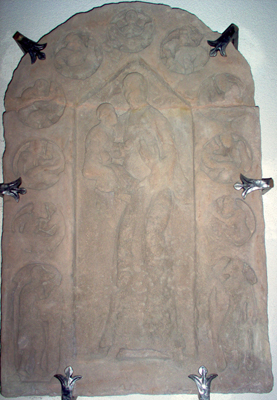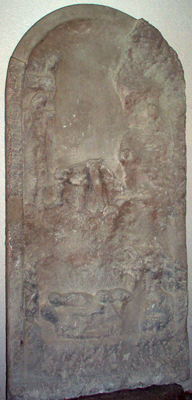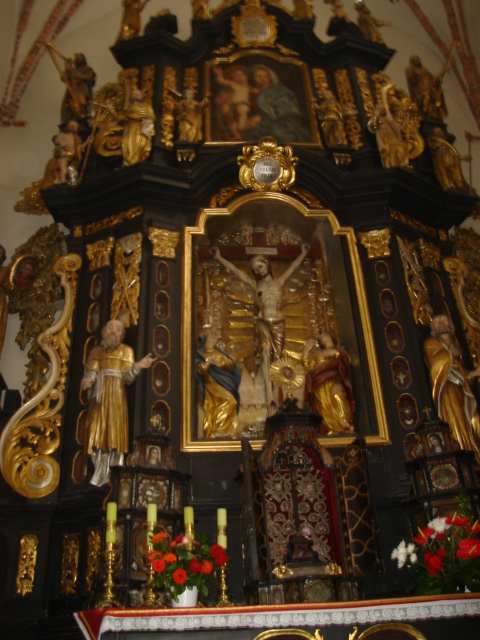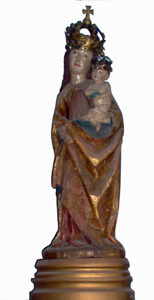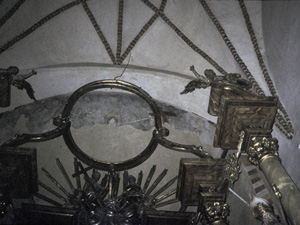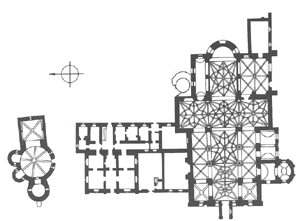Loading a
Gallery of Photos
Strzelno Convent of the
Holy Trinity
. . . THIS MAY TAKE A MOMENT OR TWO . . .
- We are very grateful to Dr. Joanna
Szczesna, Ph.D., Catholic University of Lublin,
- for her work with us concerning Polish
Religious Houses
- and her generous comments regarding
Strzelno, below.
-
-
- Aerial photograph of the convent complex at Strzelno.
-
-
- Westfront of the former convent church of the Holy Trinity, Strzelno.
-
-
- Another view of the former convent church of the Holy Trinity,
Strzelno.
-
-
- Interior of the convent church, showing the unique
-
carvings of the Virtues and the Vices on the columns.
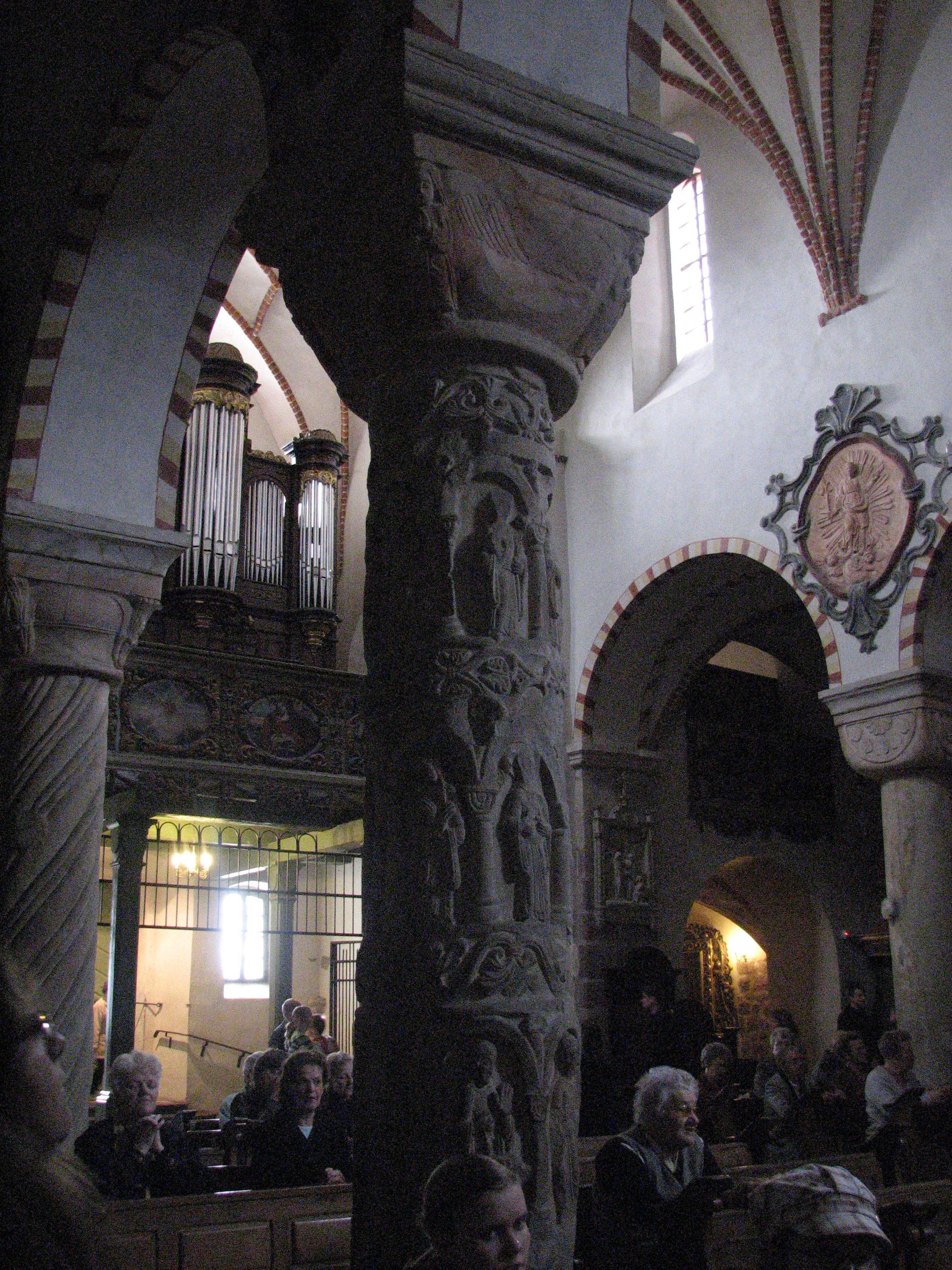
A second view of the church interior
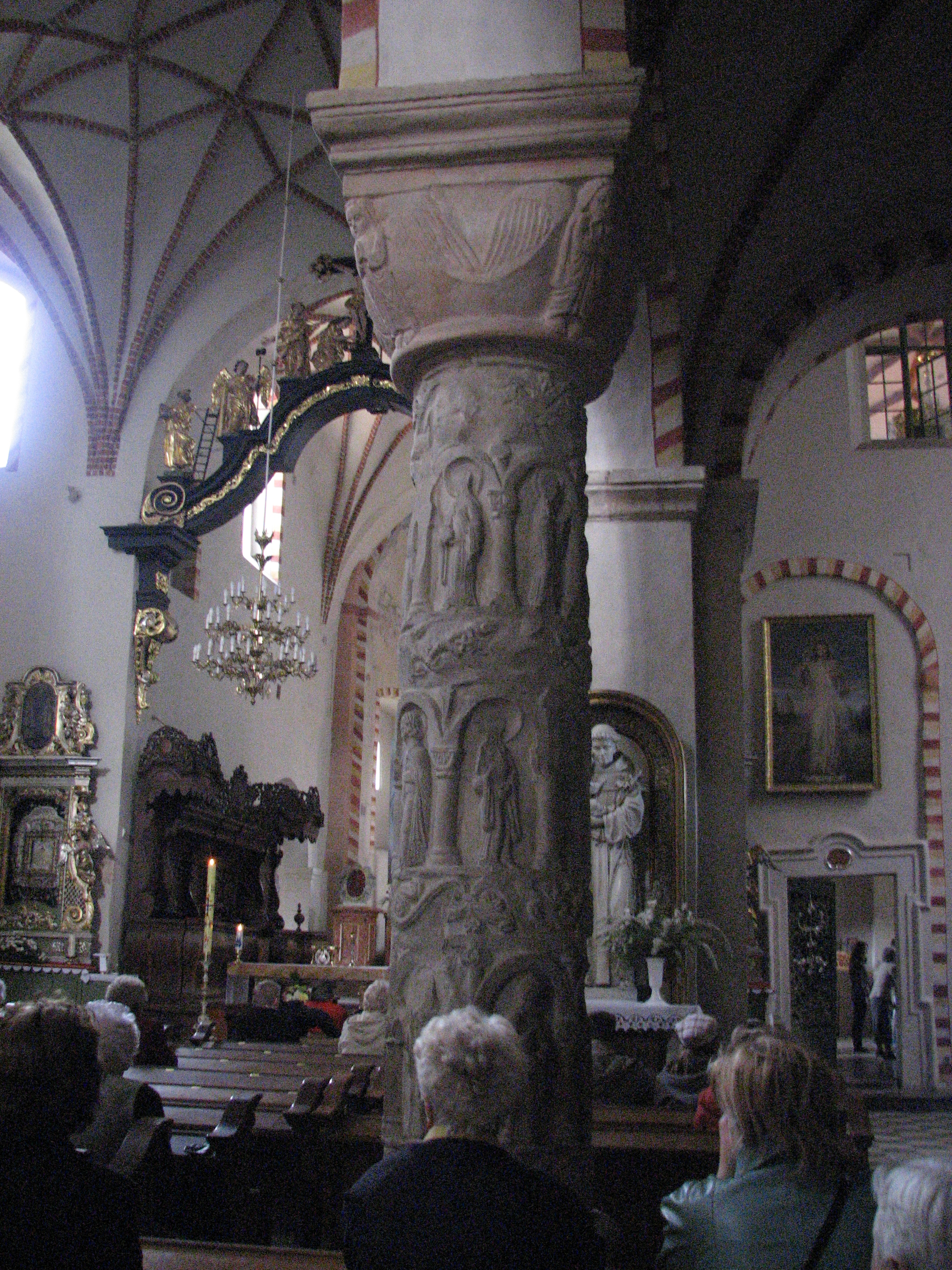
A third view of the interior of the churcch
-
- Reconstruction of the original interior, showing the two
carved columns.
-
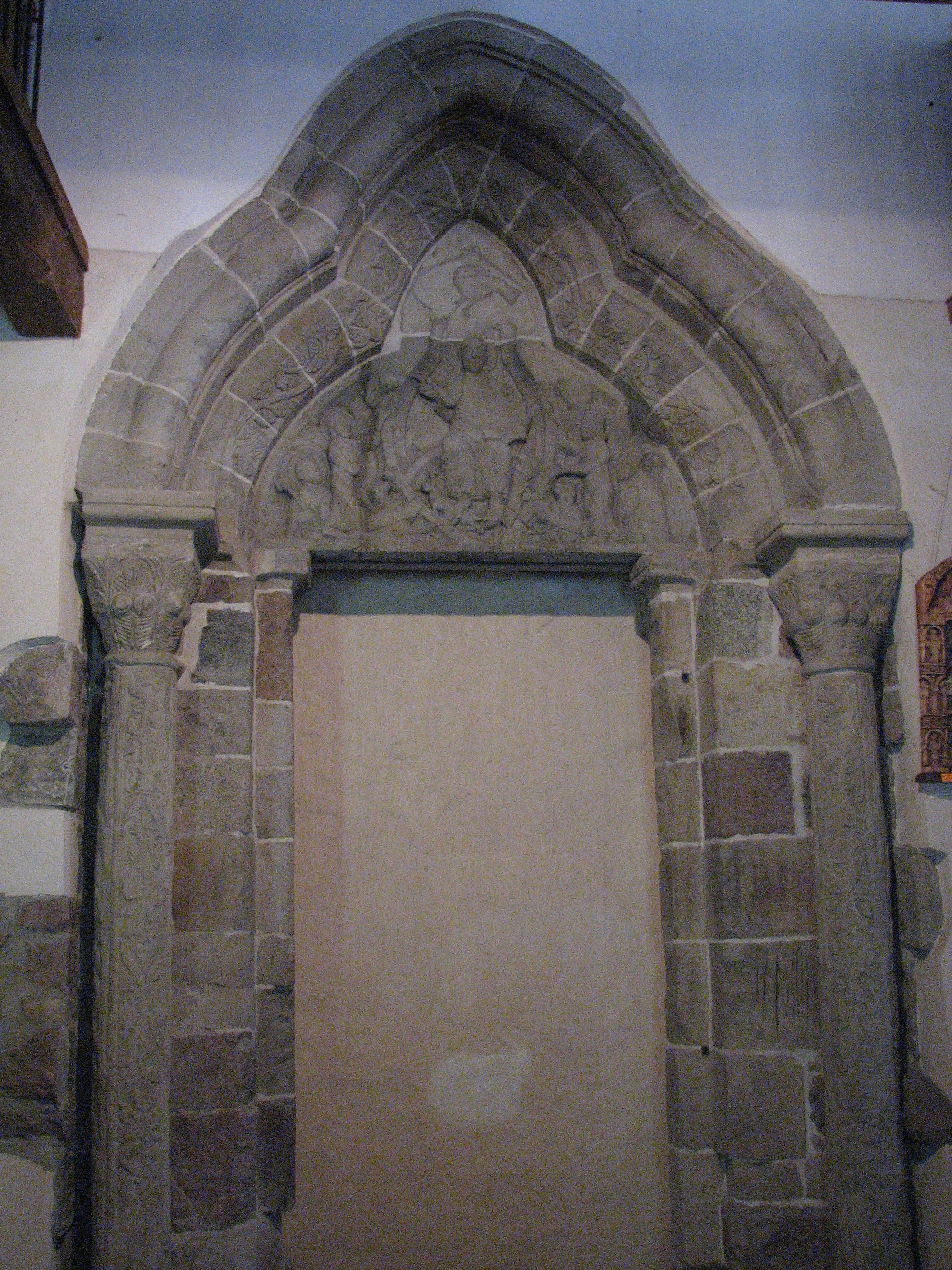
Northern Tympanum, Christ in Majesty
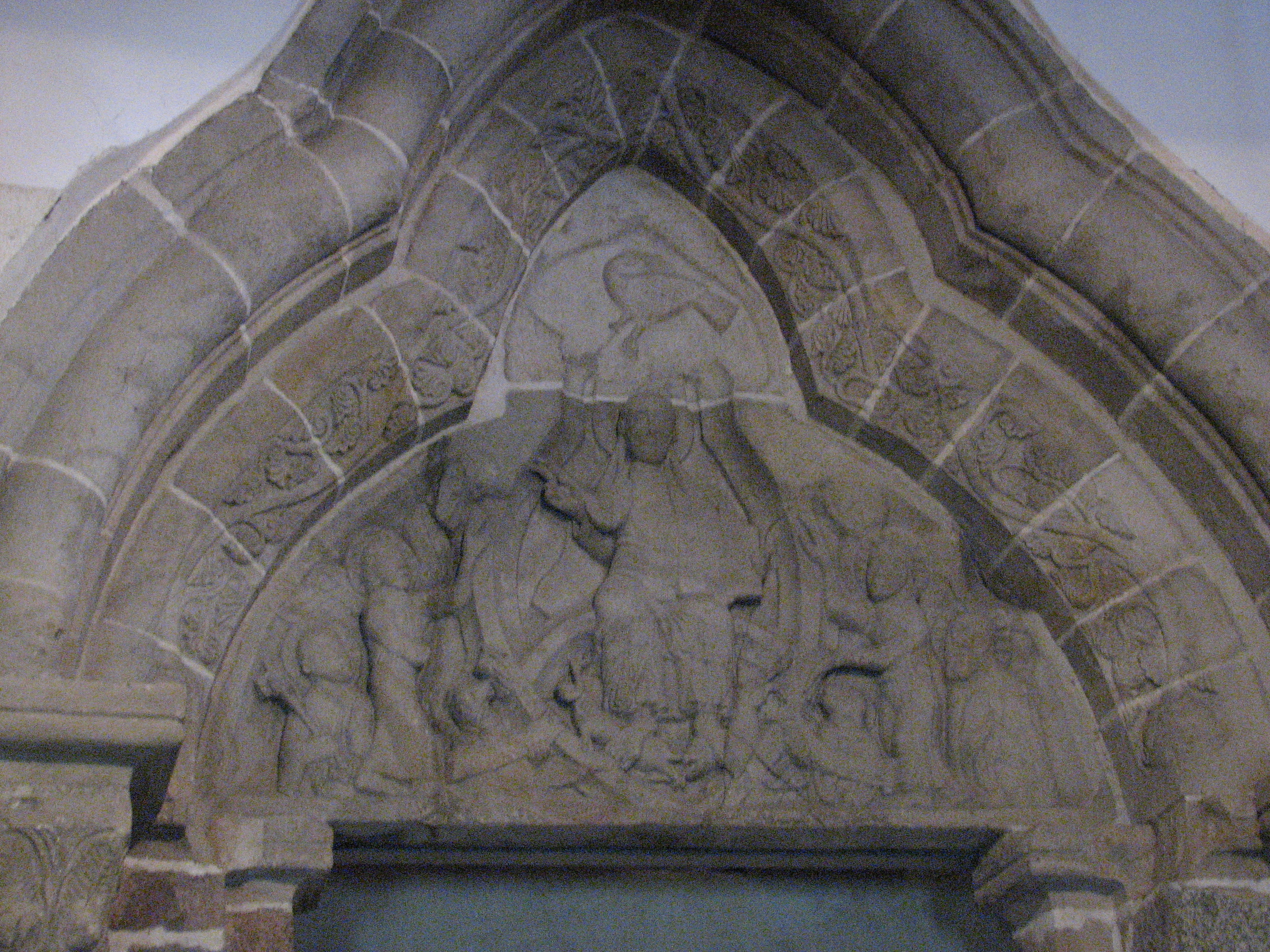
A closer view of the Northern Tympanum
- Tympanum of the Northern Tympanum.
-
-
- Tympanum of Holy Trinity convent church, showing the
Annunciation.
-
-
- Tympanum of Holy Trinity convent church, showing the
founding of the convent.
-
-
- Closeup of the northeastern carved column in the
church - depicting the vices personified.
-
- Closeup of the southeastern carved column in the
church
- depicting the virtues personified.
-
-
- Closeup of the carving of the vice 'Impurity' on one
of the columns.
- Closeup of the carving of the vice of 'Revenge' on
one
- of the columns (person is swearing a false oath).
-
-
- Closeup of the carving of the vice 'Wrath' (rage,
anger) on one of the columns.
.jpg)
- Another view of "Wrath"
- Closeup of the Virtues 'Justice' and 'Moderation' on
one of the columns.
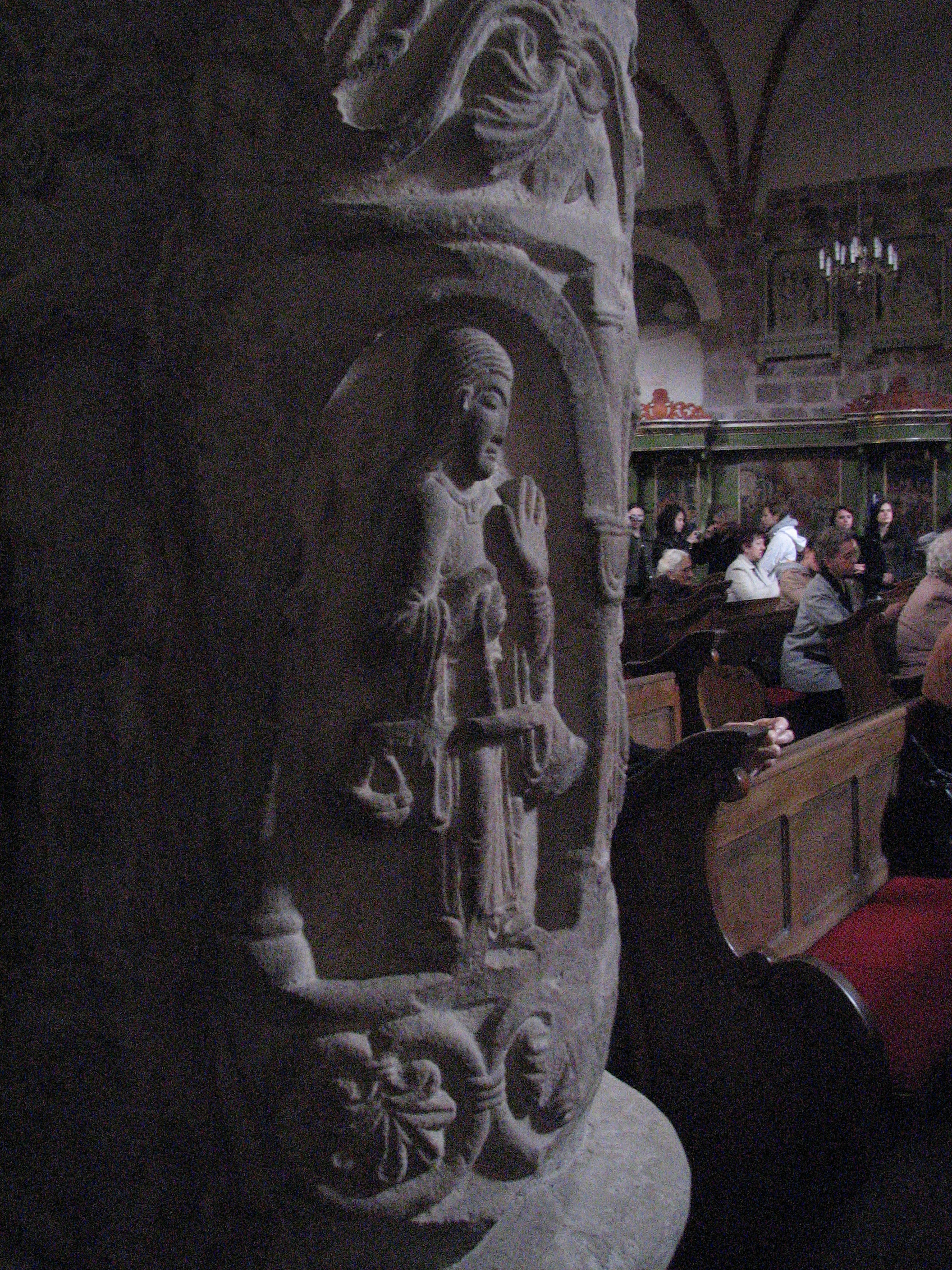
- Another view of "Justice"
- Closeup of the Virtues 'Piety' and 'Service to God'
on one of the columns.
-
.jpg)
NEW, Piety
- Convent decoration stone - The Virgin, Child and Prophets.
-
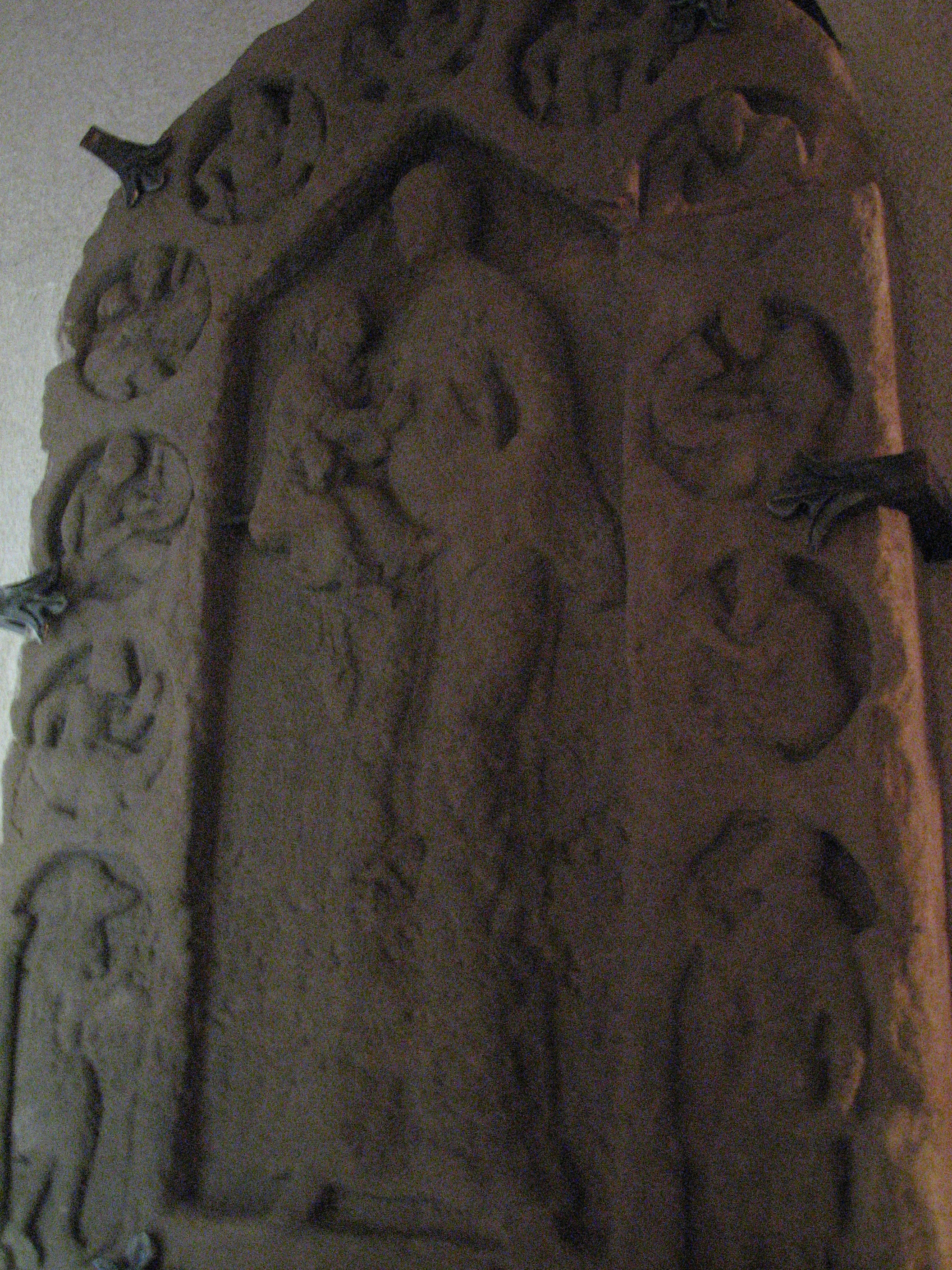
A closer view of the decoration stone: Virgin, Child and Prophets
- Convent decoration stone: Descent from the
Cross and Mourning.
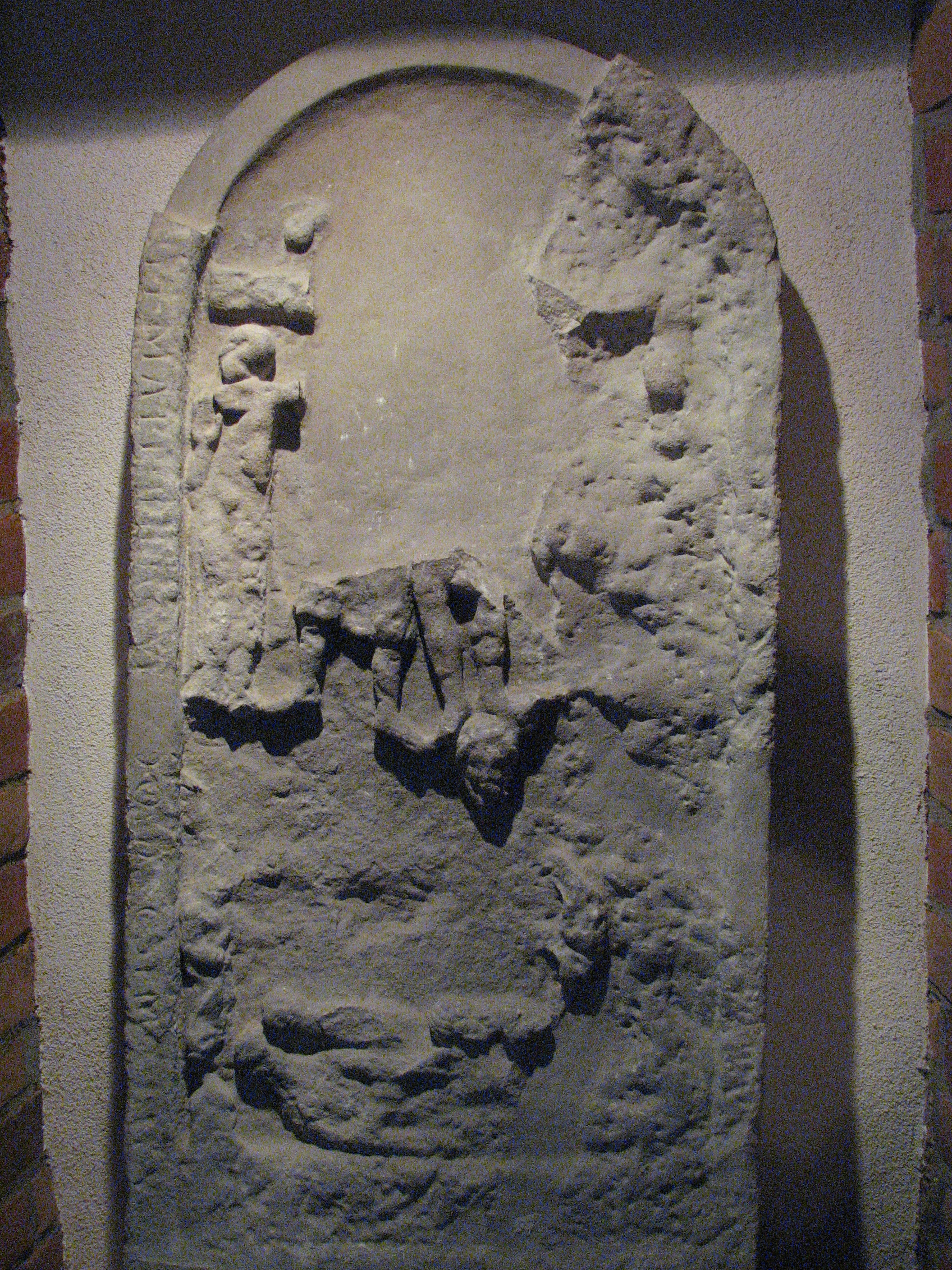
Closeup of the convent decoration stone: Descent from
the Cross and Mourning
-
- Crucifix: 3rd
quarter of the 14th century, polychrome wood, height c. 190 cm,
-
now in the Holy Cross altarpiece from 1743 in the northern part of the
transept.
- Christ in a
knee-length perisonium tied on the right. His hands are held high
-
diagonally in relation to the horizontal beam of the cross, His legs are
straight
- and His feet are crossed. The ribs and the sternum are marked
with horizontal stripes.
- His head is slightly leaning to the right, His
eyes are half-closed and
- His mouth is half-open.
By 1461 this sculpture was already being mentioned
- as a miraculous
one. In this year bishop of Wroclaw, Jan erected
- the chapel of Holy Cross
„outside the town”. In the
book of Ignacy Czechowski,
- a priest in Strzelno in 1920s who had access to
the ancient parochial documents,
- we can read that the chapel was „in the
place where sick people were healed
- in a miraculous way, because in that
place was a crucifix fashioned by
- a “folk craftsman” famous because of
its miracles. This crucifix,
after the refurbishing of
- Holy Trinity church, was placed over its high
altar”
- (I. Czechowski,
Historia kościołów strzelińskich, Strzelno 1929,
pp. 40–43 and 59).
- In any
case, the extremely high artistic quality of this crucifix in Strzelno
itself
- indicates that it was no mere work of some “folk craftsman”. In
1743 the crucifix
- was placed in northern arm of transept in the altarpiece
which was made
- especially for its exposition. Thanks
to the cultus of this crucifix, we can
- encounter mentions of it in
literature from the 18th century
- (see for example: A. D. J.
Kraszewski, Zycie swietych y w nadziei swietobliwosci
- zeszlych sług
boskich Zakonu Premonstratenskiego ... złozone... obiasnione...
podane,
- vol. 2, Warszawa 1752, p. 351).
- It
is also mentioned in bishops’ report from visitations to the house
- (Wizytacje
archidiakonatu kruszwickiego z lat 1779–1780 –
- Josephus
Rybinski DEI et Apostolica Sedis Gratia Episcopus
- Vladislaviensis
et Pomerania Eques Aquilea Alba et Sancti Stanislai,
- p. 65r, in
Archiwum Archidiecezjalne w Gnieznie, A Cons E 19).
- We read there, that in
the Crucified Jesus altarpiece we can find a miraculous
- crucifix, famous
because of its miracles for an extremely long time.
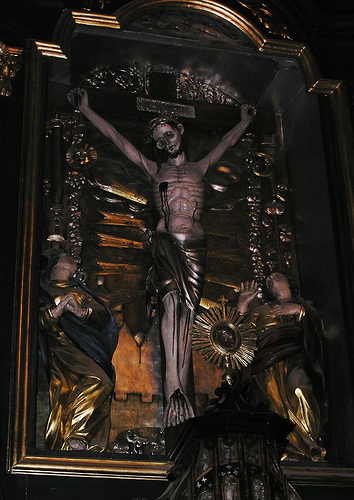
Closer view of the Miraculous Crucifix
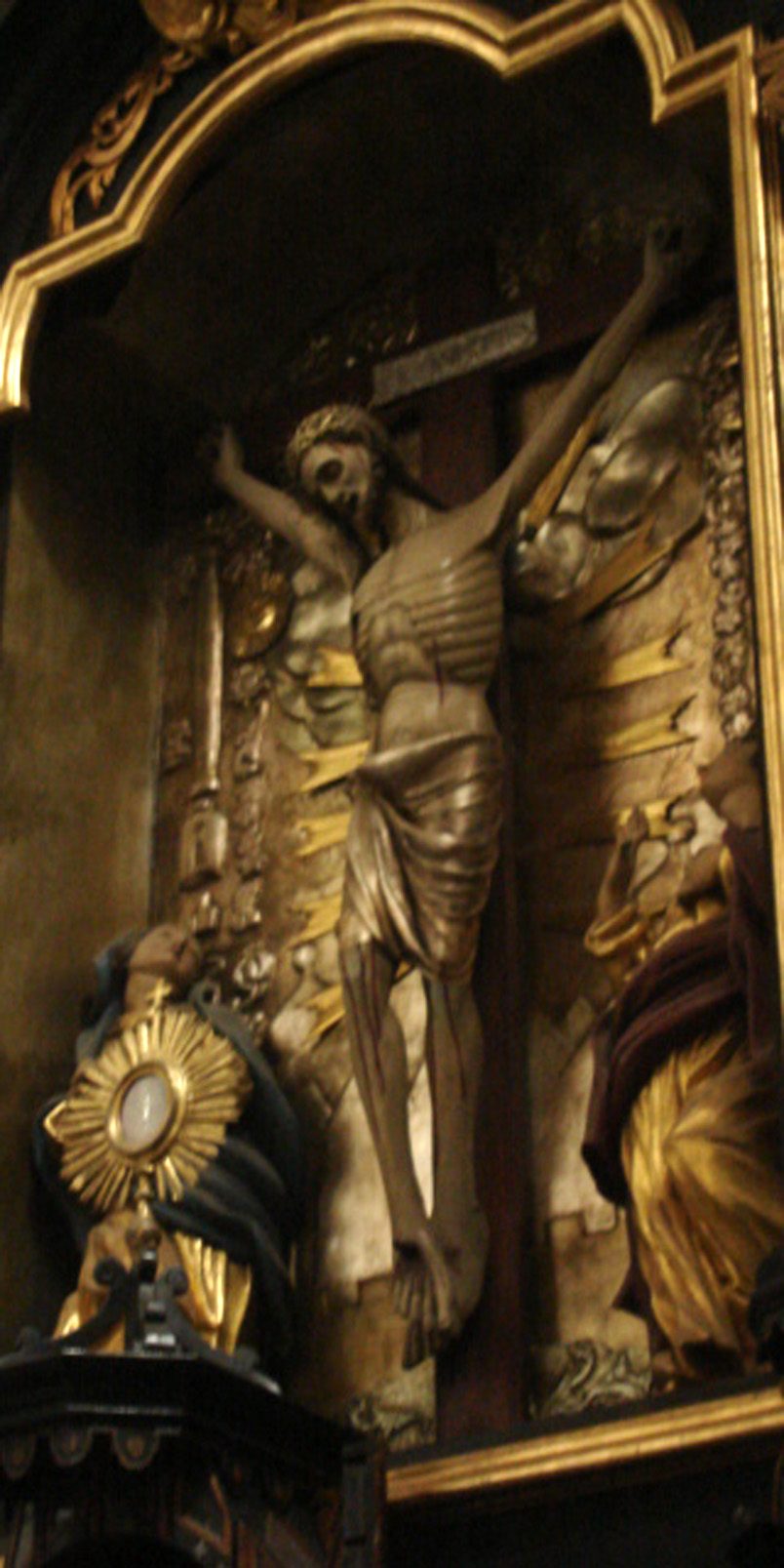
A further closeup of the Miraculous Crucifix
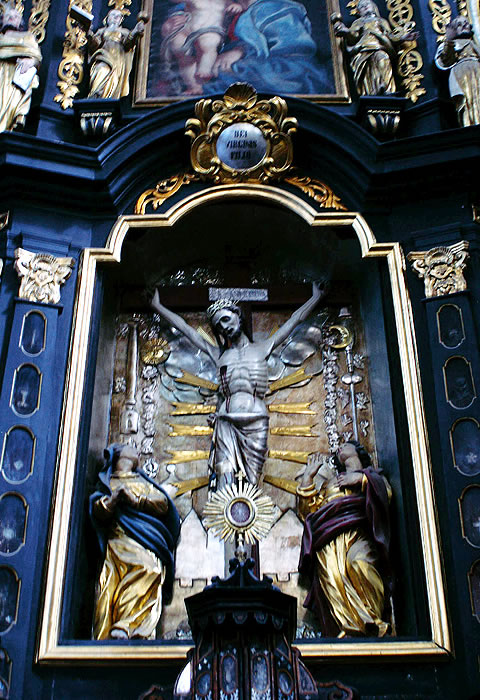
Closeup of the Miraculous crucifix (perhaps taken with a blue filter)
- Statue of
the The Virgin with the Child: end of the 15th century,
polychrome wood,
- height 120 cm, now in the altarpiece from 1743 in St.
Restitut chapel.
- A crowned
Mary is shown from the front, on her right forearm there is her naked
Child,
- also crowned and holding an apple (this is a motif often used in
Premonstratensian houses,
- in the tradition of St. Hermann-Josef – a
twelfth-century Premonstratensian mystic
- of Steinfeld Abbey). She is
wearing a red dress and a golden cloak with an azure lining
- fastened in
front. One of the flaps, which is suspended over her left arm, forms two
clearly outlined,
- deep folds at the front of the figure. Her complexion
is ivory and her hair is brown.
-
-
- Part
of the fresco with representation of The Last Judgement:
main apse, 15th century.
- This
fresco, the upper part of which is preserved, occupies the inner part of
the conch.
- In the restored portion, at
centre, we see the head of Christ
surrounded by a nimbus.
- A diagonal sword and a three-flowered lily
protrude from the mouth of Christ.
- Above, there are irregular forms of
overlapping clouds. At the sides of Christ the Judge,
- there are
representations of Arma Christi – a cross on the right and
- the
reed with the sponge on the left. Next to the cross, we can notice
- a
fragment of a wing. The dominant colours are shades of blue with elements
-
of beige in the nimbus and brown in the sections of Christ’s hair and in
the cross.
- The colours are lightened, pastel and broken down with
grey.
-
Dark contours reveal the figures.
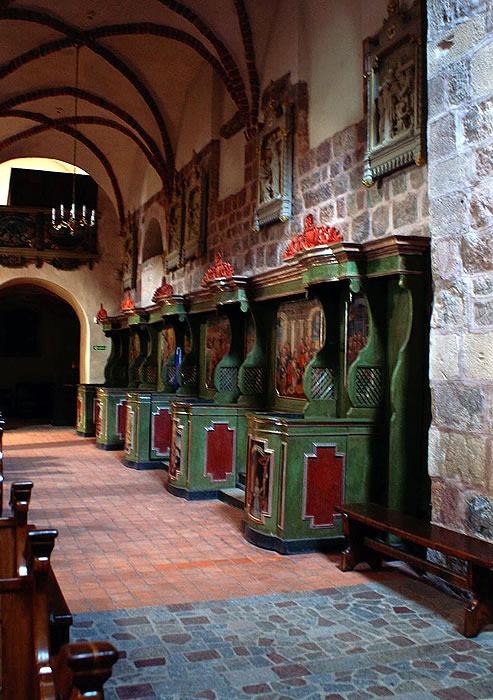
Multiple
confessionals
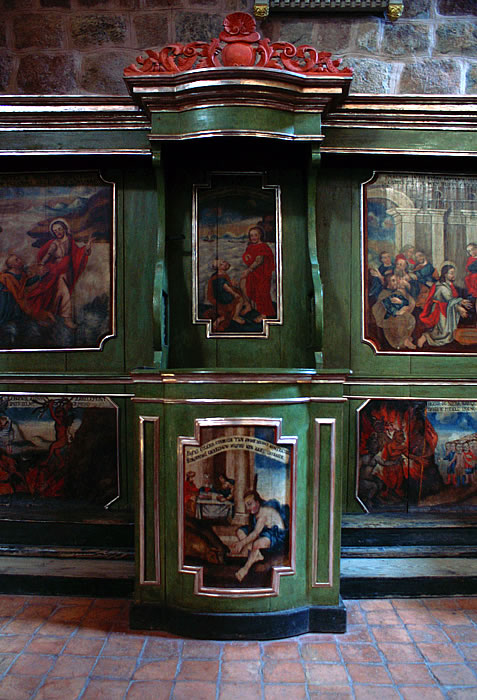
Confessional closeup
-
- Ground plan of the original convent buildings.
-
-
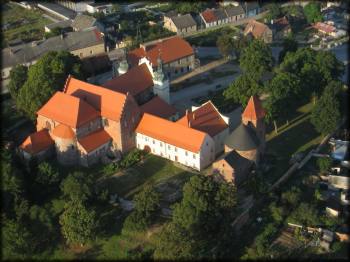
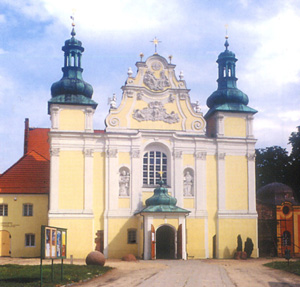
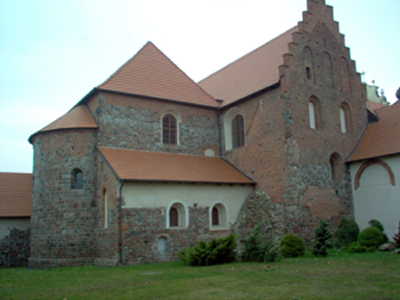
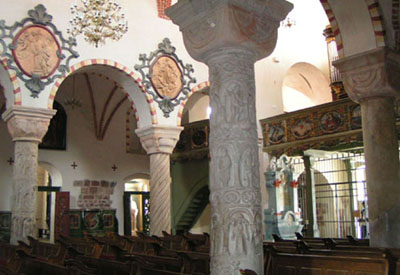






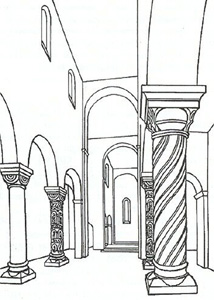


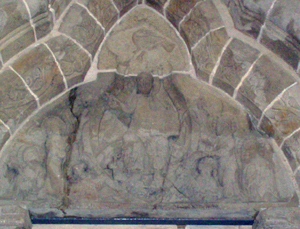
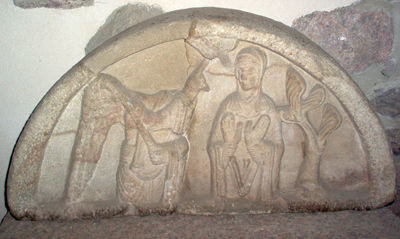
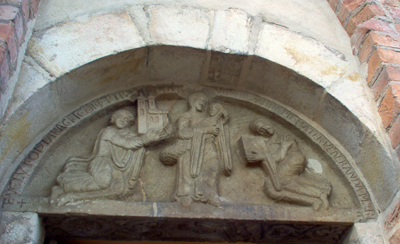
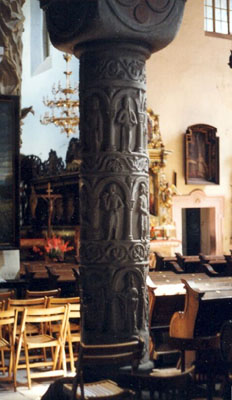
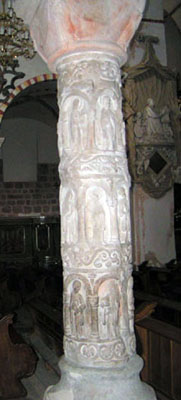
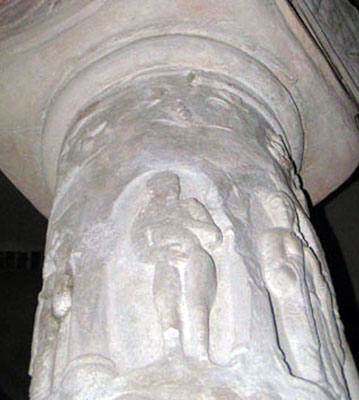
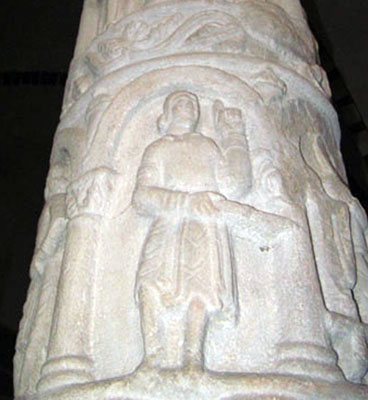
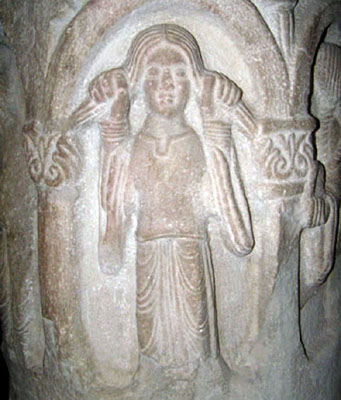
.jpg)
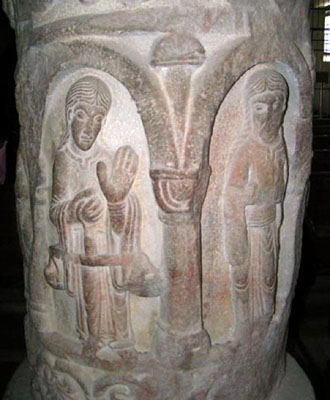

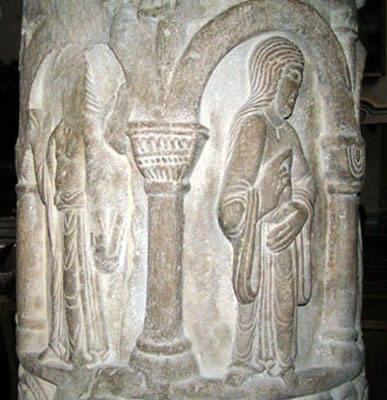
.jpg)
